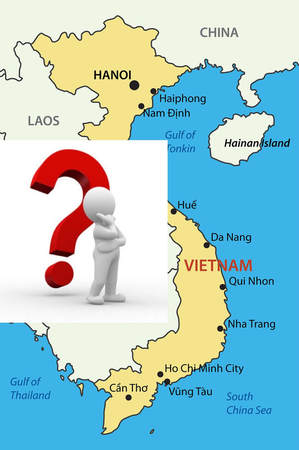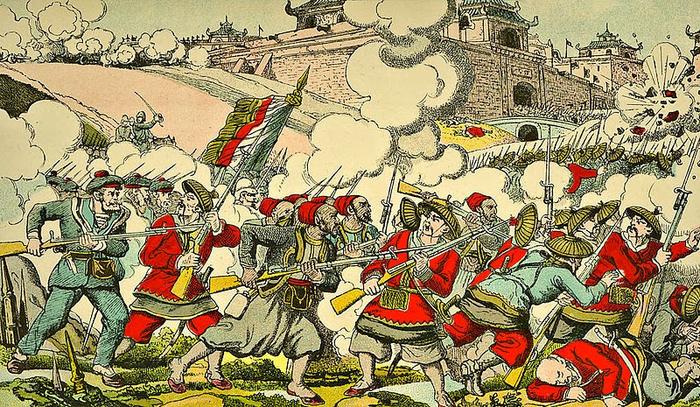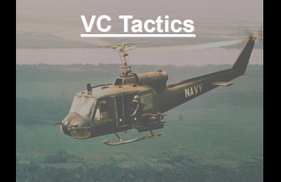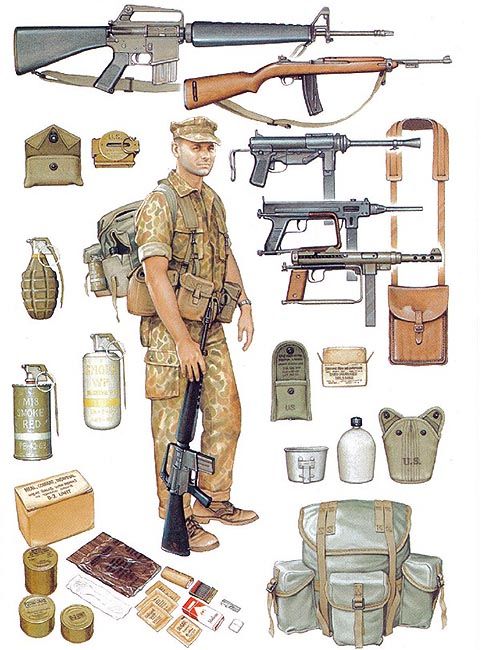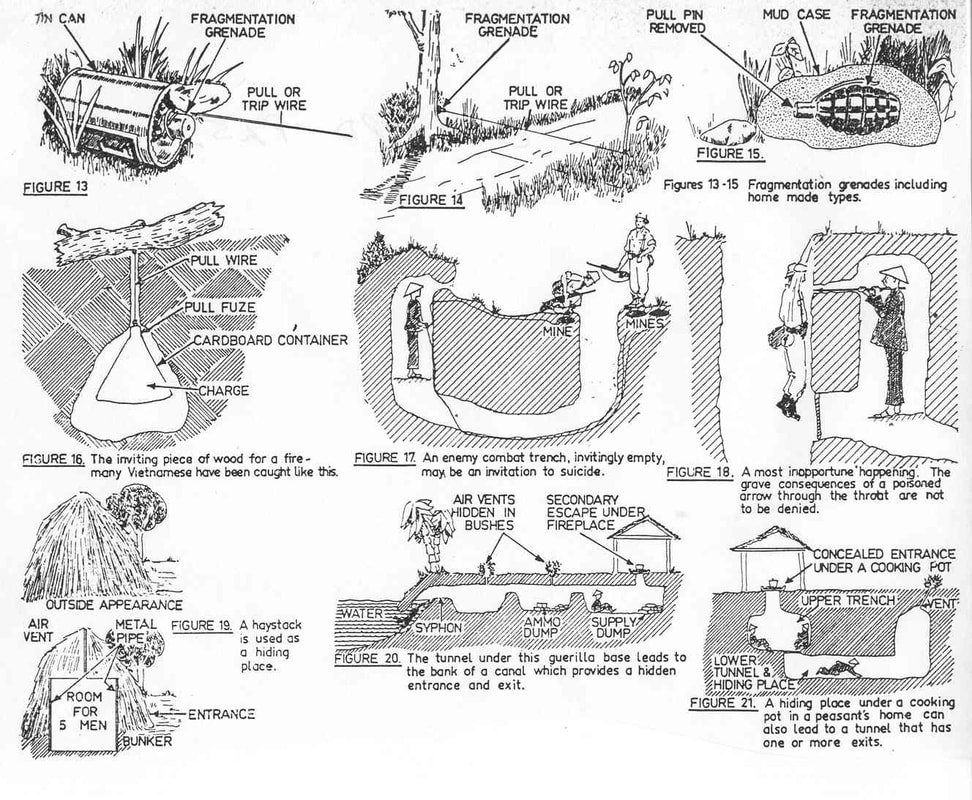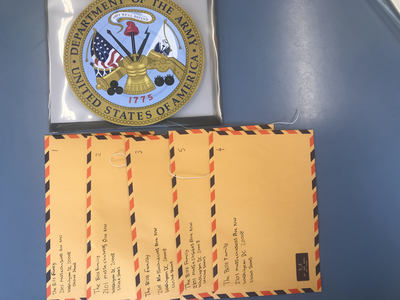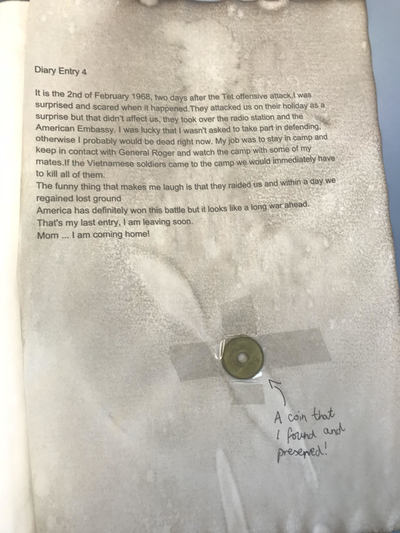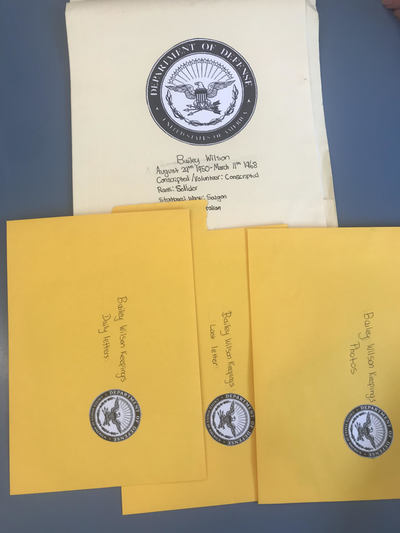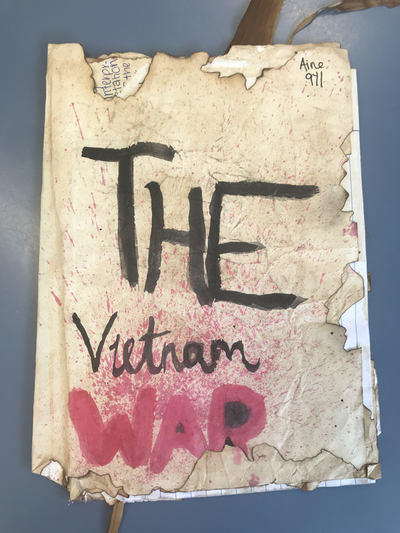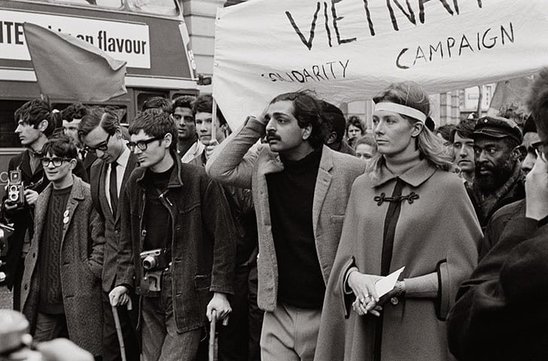0. Immersion Stage
Geography of the Vietnam War
Click the document below to open your 'Discoveries & Wonderings' organiser.
This is used for all 3 Immersion tasks.
This is used for all 3 Immersion tasks.
| y9_vietnam_d_w_organiser.docx | |
| File Size: | 42 kb |
| File Type: | docx |
Map 5 (Air and Sea) and some bonus maps:
Vietnam by Numbers
Your second 'immersion' task will provide information about the Vietnam War in the form of statistics, graphs and charts. Carry out the task(s) and consider what information these numbers provide about the war itself.
Remember to record your learning on your 'Discoveries & Wonderings Organiser'.
Remember to record your learning on your 'Discoveries & Wonderings Organiser'.
Vietnam: A Peoples' war
Your final task, at this stage, is to explore evidence provided by the people who experienced the war.
Consider the words and images carefully, and don't forget to evaluate the evidence for any bias.
'Guiding Questions' accompany each video clip; use these to identify points to include in your 'Discoveries & Wonderings'.
Consider the words and images carefully, and don't forget to evaluate the evidence for any bias.
'Guiding Questions' accompany each video clip; use these to identify points to include in your 'Discoveries & Wonderings'.
Clip 1 - General Images
What differences do you notice between the U.S. military forces and those of the North Vietnamese?
What does the clip reveal about the popularity of the soldiers on both sides?
Do you think it is acceptable to put images of war to rock music?
What does the clip reveal about the popularity of the soldiers on both sides?
Do you think it is acceptable to put images of war to rock music?
Clip 2 - 'Killer'
What does this clip reveal about the attitudes of American soldiers in Vietnam?
Why might you question the value of this evidence?
Why might you question the value of this evidence?
Clip 3 - 'Emotional Return to Vietnam'
Why has the 'Vietnam Veteran' returned to Vietnam?
What does the clip reveal about the impact of the war on those affected by it?
What does the clip reveal about attitudes to the war in Vietnam today?
What does the clip reveal about the impact of the war on those affected by it?
What does the clip reveal about attitudes to the war in Vietnam today?
Clip 4 - 'In the words of the soldiers...'
What does the clip reveal about the feelings of the soldiers in Vietnam?
What factual information can we learn from this clip?
If you worked for the U.S. Army Censorship Dept. which parts of the clip would you 'cut'?
What factual information can we learn from this clip?
If you worked for the U.S. Army Censorship Dept. which parts of the clip would you 'cut'?
Organise your ideas:
Do a mind map to put what you have learnt from the immersion tasks together. Use bubbl.us, popplet, Text 2 Mind map or paper.
Use these headings to start you off: Vietnam's location and importance; Military Involvement; The Human Cost
In the central bubble answer this question: The Vietnam War is significant because...
Use these headings to start you off: Vietnam's location and importance; Military Involvement; The Human Cost
In the central bubble answer this question: The Vietnam War is significant because...
Put your knowledge to work:
PEAL practice using sources and making inferences
You are developing your inference skills from Holocaust section. Instead of just talking about inference, practise writing about it.
Go back to the Immersion resources and pick 2 sources. For both, write an answer in the style of iGCSE WW1 Paper question.That is, look at the source, devise a question and answer it.
Infer from the source, following the PEAL format and using up to 3 pieces of evidence per paragraph (PEAEAEAL). Use signposting eg From this source it can be inferred that…. This is shown by……Make sure you use a topic sentence, 3 pieces of evidence and have a concluding sentence, to promote PEAL paragraphs. Make sure you use and incorporate quotes correctly. If relevant, go back to Holocaust assessment and reflect on the quality of your answers and evaluate how successfully you wrote inference answers. Teacher can model an answer on the board.
Additionally, find your own source about Vietnam (perhaps a cartoon or a written source), write a question and inferring from it write an answer. Send the same cartoon and the question to a partner. The partner writes an answer.
Mark each other’s answers out of 9. 1 mark each for clear T/S, 3 pieces of evidence, 3 pieces of analysis, a concluding sentence, good expression.
Extension:
Try and find a source which shows a Vietnamese or Australian point of view, rather than an American one. Compare the differences between the sources.
Go back to the Immersion resources and pick 2 sources. For both, write an answer in the style of iGCSE WW1 Paper question.That is, look at the source, devise a question and answer it.
Infer from the source, following the PEAL format and using up to 3 pieces of evidence per paragraph (PEAEAEAL). Use signposting eg From this source it can be inferred that…. This is shown by……Make sure you use a topic sentence, 3 pieces of evidence and have a concluding sentence, to promote PEAL paragraphs. Make sure you use and incorporate quotes correctly. If relevant, go back to Holocaust assessment and reflect on the quality of your answers and evaluate how successfully you wrote inference answers. Teacher can model an answer on the board.
Additionally, find your own source about Vietnam (perhaps a cartoon or a written source), write a question and inferring from it write an answer. Send the same cartoon and the question to a partner. The partner writes an answer.
Mark each other’s answers out of 9. 1 mark each for clear T/S, 3 pieces of evidence, 3 pieces of analysis, a concluding sentence, good expression.
Extension:
Try and find a source which shows a Vietnamese or Australian point of view, rather than an American one. Compare the differences between the sources.
1. Why did the US get involved in Vietnam? 1. The defeat of the French in 1954.
|
Have a look at this presentation
https://docs.google.com/presentation/d/1LgtBPP44Wk46ioakCe4FW6KdS0O9nkOPcV4tFWLXgH0/edit#slide=id.g6fea97ef5_0_28 Colour in the countries on the map of Indo-china during French colonial times. Draw a key. You can add cities and other details to the map as you learn them. Use this site if you need help
Open and complete the 'Dien Bien Phu' document below. You will need the pdf as well for the last task. Remember to save your sheet to your website. LINK FOR TASK 2: http://www.pbs.org/wgbh/amex/vietnam/whos/whos-vo_nguyen_giap.html | |||||||
| the_vietnam_war_summary_of_events.mp4 | |
| File Size: | 13623 kb |
| File Type: | mp4 |
|
| ||||||||||||
To keep a record of key events make a copy of this google document and complete for the first key event in 1954 https://docs.google.com/document/d/1Ky06gezXG2yeHX52HeeGVLmdYzYFzDM2DsVESn7bmY0/edit
Do the photo match up activity now, to see if you know some of the main people involved in the American involvement in Vietnam.
Do the photo match up activity now, to see if you know some of the main people involved in the American involvement in Vietnam.
| photo_match_up.docx | |
| File Size: | 82 kb |
| File Type: | docx |
-----------------------------------------------------------------------------------------------------------------------------------------
2. Why did the US get involved in Vietnam 2: The US perspective.
Create a timeline with at least nine steps that explains why the USA got involved in Vietnam. USING THE FILE BELOW AND THE PPT.
2. Know your key terms:
i) Copy the key terms from the first slide of this presentation into a new page 'Key Terms Vietnam'
ii) Define each key term (in your own words) by reading through the rest of the powerpoint.
| how_the_usa_got_involved_in_the_vietnam_war.docx | |
| File Size: | 22 kb |
| File Type: | docx |
| vietnam_terms.pptx | |
| File Size: | 181 kb |
| File Type: | pptx |
Watch for more information about the US involvement in the Vietnam War
|
|
|
-----------------------------------------------------------------------------------------------------------------------------------------
3. What were the Vietcong tactics? What were the effects of these tactics?
1. CLICK THROUGH THE POWER POINT BELOW AND DO THE FOLLOWING:
(Note: click on 'VC Tactics' image to download; you will need to watch it in present mode for interactive elements; all work should end up on your Google Site - photo etc. fine).
At Slide 5- add the Ho Chi Minh trail to your map from previous lessons
At Slide 7- Research one of the following: booby traps such as fuel tank traps, tin can trap, bamboo, holes, trip wire, punji traps, bouncing betty. Do this quickly and report back. Others make notes. You can watch 'Scariest Booby Traps' video below at this point.
At Slide 12- Draw a diagram of the features of a tunnel network.
At Slide 13- discuss the statements with a partner.
(Note: click on 'VC Tactics' image to download; you will need to watch it in present mode for interactive elements; all work should end up on your Google Site - photo etc. fine).
At Slide 5- add the Ho Chi Minh trail to your map from previous lessons
At Slide 7- Research one of the following: booby traps such as fuel tank traps, tin can trap, bamboo, holes, trip wire, punji traps, bouncing betty. Do this quickly and report back. Others make notes. You can watch 'Scariest Booby Traps' video below at this point.
At Slide 12- Draw a diagram of the features of a tunnel network.
At Slide 13- discuss the statements with a partner.
Click to set custom HTML
-----------------------------------------------------------------------------------------------------------------------------------------
3b. What were the American tactics?
|
The Americans put the first ground troops into Vietnam in 1965 and withdrew in 1973. During the course of the fighting the US troops used three major tactics. You are going to research into these and build up a jigsaw of them as a group.
Use the resources as a stimulus, but do not limit yourself to them. When researching consider three things; 1) What did the USA hope to achieve by using these tactics? 2) Why were these tactics not very successful (think of the VC tactics). 3) Would these tactics lead to problems for the USA, how?
|
An introduction to the US fighting, be careful to read beyond this as there is some quite basic ideas here.
| ||||||
Bingo: Vietnam keywords |
| ||||||
-----------------------------------------------------------------------------------------------------------------------------------------
4. Why did the US decide to withdraw from Vietnam? The Tet Offensive?
|
As we watch the video introduction, take notes on;
- When was the Tet offensive. - Who attacked and where. - What were the immediate results. - What were the long term results. |
|
Use the resources below to get a sense of the chronology and importance of the Tet offensive. Present your ideas in a a Tet offensive cartoon or flowchart. This should show;
- The causes of the Tet offensive.
- The aims of the North Vietnamese forces and Vietcong.
- The American reaction.
- Areas where fighting took place.
- The effect on both sides (US and North Vietnamese).
- The causes of the Tet offensive.
- The aims of the North Vietnamese forces and Vietcong.
- The American reaction.
- Areas where fighting took place.
- The effect on both sides (US and North Vietnamese).
|
Use the powerpoint below
|
|
| ||||||
--------------------------------------------------------------------------------------------------------------------------------
5. Why is the My Lai Massacre an example of dehumanisation?
The My Lai massacre involved American soldiers going into a Vietnamese village and slaughtering almost all the villagers. This was not an order. The soldiers had been sent to hound out Viet Cong. This act horrified the American public and fuelled the protest movement. The soldiers who were involved were blamed and most suffered from the experience themselves.
a.) As a starter, complete the following exercise. In this document, there is a second image. Come back when you know more about My Lai and consider the message of this magazine cover.
a.) As a starter, complete the following exercise. In this document, there is a second image. Come back when you know more about My Lai and consider the message of this magazine cover.
| my_lai_source_images.docx | |
| File Size: | 206 kb |
| File Type: | docx |
b.) Use the note taking frame below while watching the videos
Clip 1 top Left (A summary)
Clip 2 Bottom Left (Summary of event and training of US soldiers) Up to 7 minutes (no need to go further)
Clip 3 Top Right (behaviour of soldiers)
Clip 4 Bottom Right (effects on villagers and US soldiers). Only up to 5.40 (too graphic in description after that)
Clip 1 top Left (A summary)
Clip 2 Bottom Left (Summary of event and training of US soldiers) Up to 7 minutes (no need to go further)
Clip 3 Top Right (behaviour of soldiers)
Clip 4 Bottom Right (effects on villagers and US soldiers). Only up to 5.40 (too graphic in description after that)
| my_lai_massacre_note_frame_for_lesson_10_and_11.docx | |
| File Size: | 18 kb |
| File Type: | docx |
|
|
|
|
|
c.) Read the “My Lai source exercise” Do Question 3 on the first page, then Question 4 and Question 2 (in that order) on the second page
|
|
|
| my_lai_source_exercise.pdf | |
| File Size: | 327 kb |
| File Type: | |
6. What would the effect of war on a soldier be?
The soldiers are not “victims” but war still affects them. They are often dehumanised by war, as we saw in My Lai. We are going to continue looking at this idea. Sometimes soldiers are in fact, very affected by war and not dehumanised at all, or they can act in a dehumanised way during the war and be affected much later.
a.) Listen to the song, "I was only 19" by an Australian band called Redgum. Pay attention to the lyrics.
Answer this question: How could a soldier feel about war?
b.) Now do question 3 on Source activity two to practise your PEAL skills and consider the dehumanisation of soldiers
| source_activity_two.docx | |
| File Size: | 220 kb |
| File Type: | docx |
c.) Watch some clips from the documentary “Dear America”. There are some here but more in the teacher folder…only the 1st has no soundtrack…They are real letters from soldiers read by famous actors.
As you watch, make notes about the things that are important to the soldiers, things they do, how they live and how they feel about being a soldier.
As you watch, make notes about the things that are important to the soldiers, things they do, how they live and how they feel about being a soldier.
|
|
|
|
d.) Do a chat show interviewing a couple of different types of soldier (VC, US, Australian, private, captain, conscript etc. Just write a few script ideas…don’t fully script. Have 4 people in a group. The interviewer writes some questions. Others write character notes for their person. Act in role.
Perform for other groups.
Perform for other groups.
6b; Rest and Relaxation - Taking a break from the War.
|
During the Vietnam War soldiers were allowed periodic leave to get away from the front lines. The majority of the soldiers took their leave in Vietnam at China Beach, near Da'Nang. These brief periods of respite from the fighting would have been a chance to recharge the batteries, socialise and play games on the beach. Use the information in the sources to get an idea of what R + R was about and think what your G.I. is going to include in their entry for their furlough to China Beach.
|
|
6c; Weapons of the Vietnam War
For one section of the scrapbook your soldier needs to discuss the different weapons used in the Vietnam War. Use some of the resources here to build up a picture of what weapons were used by each side and how effective they were.
|
The USA - Main weapons
|
The Vietcong
|
Make sure to consider which weapons your soldier would have used and the specific dangers they would have faced from the Vietnamese, how would they cope with these dangers?
7. Scrapbook Assessment
As your assessment for this unit, you are going to put yourself in the shoes of an American or Australian soldier during the Vietnam War. You will produce a scrapbook of journal entries that you wrote while in Vietnam. The emphasis is on the effect the war had on you psychologically.This scrapbook will be assessed on written content, but also on organisation and presentation. All the instructions for the scrapbook are on the following document. Look below for some ideas about presentation. Use "artefacts" as well as written work to give your work your soldier's "personality".
| vietnam_scrapbook_assessment.docx | |
| File Size: | 32 kb |
| File Type: | docx |
Here are some examples:
Watch these 2 videos from "Forrest Gump" to give you some ideas to write about in your entries:
| peer_assessment_criteria_for_scrapbook.docx | |
| File Size: | 12 kb |
| File Type: | docx |
|
|
| ||||||
8. Why did the US decide to withdraw from Vietnam? The Protest Movement
Look who was protesting.....Do you recognise the man with the glasses and the cane?
We have already looked at the military reasons why the USA failed to win in Vietnam - now we need to make connections to reasons why they decided to give up and leave.
While there is lots of politics behind this decision, it really boiled down to a build up of opposition to the war from a wide range of groups in society within America. Your job is to find out more about each.
While there is lots of politics behind this decision, it really boiled down to a build up of opposition to the war from a wide range of groups in society within America. Your job is to find out more about each.
| protest_research_frame_1_updated_2018.docx | |
| File Size: | 16 kb |
| File Type: | docx |
a) The Impact of Civil Rights Leaders
As we have seen many of the soldiers were from poorer communities who could not avoid the draft. Due to the racial segregation in America at the time, this meant that many were therefore black. Civil rights leaders began to argue that this was unfair. Watch one of these videos each and share.
i) Martin Luther King |
ii) Muhammad Ali
|
Further reading: https://www.nytimes.com/2017/07/18/opinion/racism-vietnam-war.html
b) The Kent State Massacre
As the war continued, more and more people got frustrated with it - they increasingly saw it as not only cruel on the people of Vietnam, but also unfair because of the draft system. As protests increased by students, the government tried to crack down using force. The result was the Kent State Massacre - look at the resource below and complete the Kent State section.
Click here
Click here
c) The Impact of youth culture - music
Below are links to a series of pop songs that became extremely popular with the young people in America during the Vietnam War. Listen and watch two of them each & share.
Barry McGuire: "Eve of destruction"
Elvis Priestly: " I can dream"
Credence Clearwater Revival: 'Fortunate Son"
Neil Young: "Ohio"
John Lennon: 'Give me some truth"
Barry McGuire: "Eve of destruction"
Elvis Priestly: " I can dream"
Credence Clearwater Revival: 'Fortunate Son"
Neil Young: "Ohio"
John Lennon: 'Give me some truth"
d) The Politicians
As the war went on and became more and more unpopular, politicians began to criticise it more and more - partly as a way of getting votes. Richard Nixon produced the following video to try and get himself elected in 1968. Use it to complete the 'politicians' section:
Media &The photographers
Have a look through these iconic photos of the Vietnam War on the BBC website, reading the explanation. You need to pick two that you think would have had the most impact on the American people's support for the war - you need to be able to explain why you picked the two that you did.
Click here
Click here
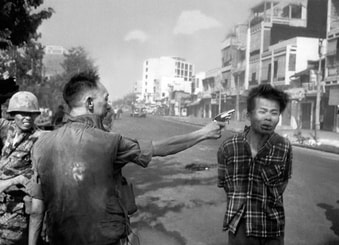
Read this article about the iconic photo of a South Vietnamese Policeman shooting a Vietcong solider. The photographer "Adams felt that, by taking the photo, he had ruined Loan’s life. He felt Loan was a good man, in a bad situation, and he deeply regretted the negative impact that the photo had on him". https://cherrieswriter.wordpress.com/2015/08/03/the-story-behind-the-famous-saigon-execution-photo/
Should Adams have taken and distributed that photos? State your reasons why.
Should Adams have taken and distributed that photos? State your reasons why.
----------------------------------------------------------------------------------------------------------------------------------------------------------
